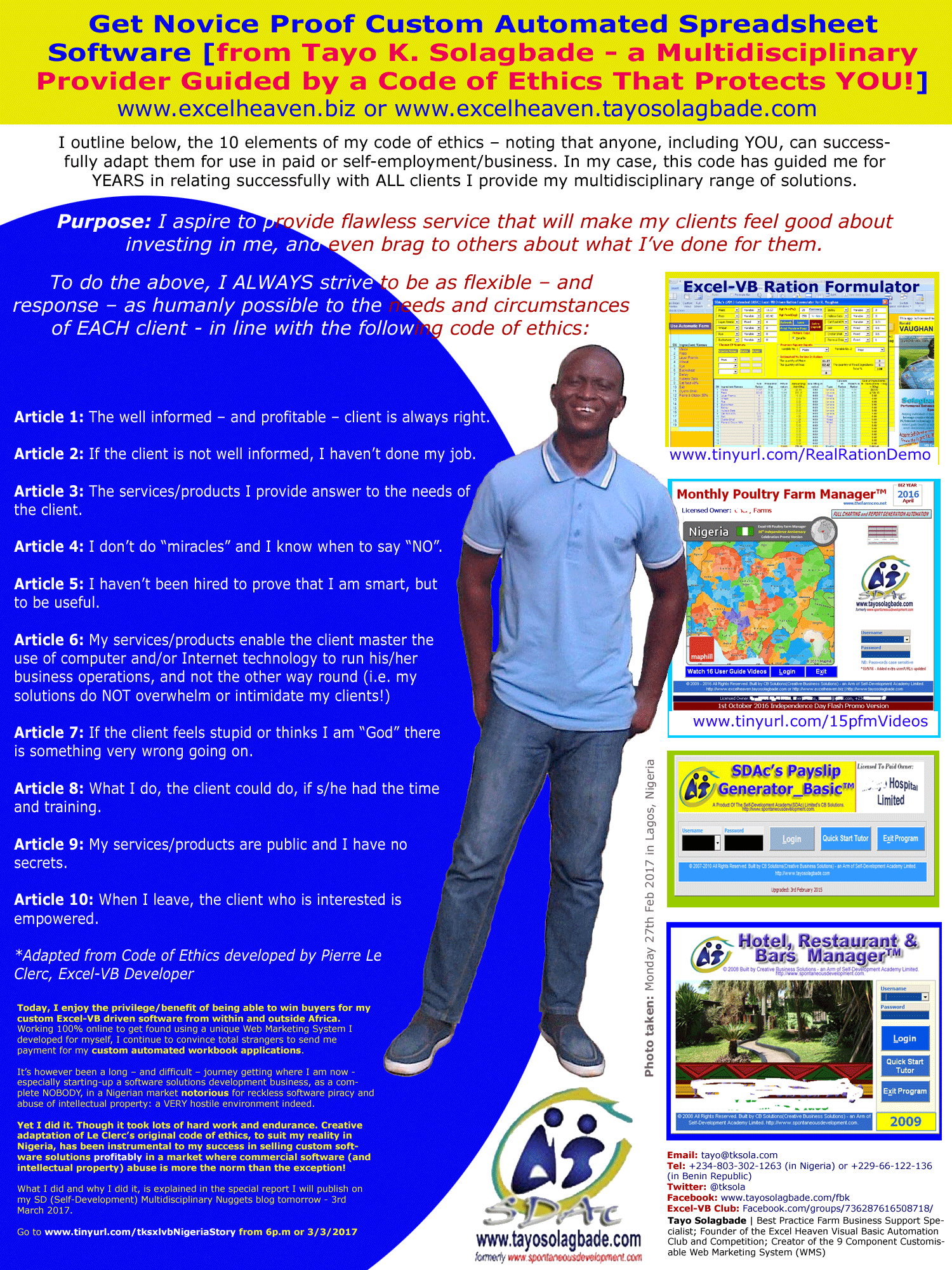This is Part 2 of 2 of this Career Development article. Click here to read Part 1 of 2.
6. Endorse ‘Leading” And Make “Bossing” Unfashionable:
Make it obvious that “No bosses” are wanted in your workplace, and that only leaders are welcome. The difference between these two types of people is that the former seek to dominate others, in a bid to get them to deliver results, while the latter aim to inspire others to perform.
7. Advocate Intelligent Mistake Making:
I’ve said this in a past article. Discard the “Shoot the messenger” mentality – if it exists in any form.
Aim to m ake it safe for people to make mistakes. If you allow a blame culture to take root in your workplace, people will hide their mistakes, and rarely own up – causing major problems. Mistakes that do not get stopped via corrective feedback to those responsible, will get repeated and lead to customer complaints, losses/wastes etc.
If you want people to develop on the job, you must be willing to accept that they will make mistakes on the job – because they are human!
Your role will be to help them learn from those mistakes and work hard to avoid repeating them. Anytime a person fails or makes a mistake, s/he must be made to identity and understand the cause. S/he must learn to use failure as a learning platform.
It’s simple common sense. For some strange reason, people keep repeating this mistake. That’s why I consider it worth repeating periodically!
8. Create Micro-Businesses:
Get individual departments to see themselves as mini businesses within the larger company.
Department heads can choose to regard the different units within their departments as micro businesses within each departmental mini business.
Each micro business will have a mission, which would basically be to achieve a result or complete a task that is required for other micro business(es), and the mini business to achieve their own goals…which are all linked to the organisation’s overall purpose.
At each level (Macro, Mini and Micro), the relevant team members would decide on their individual mission statements. They could draw from what they have to do within the bigger departmental unit.
This will give members a more tangible indication of what is required of them, making them better able to understand what they need to do and why.
9. When Introducing Change(s), Ensure Those Affected UNDERSTAND Why:
How do you go about introducing/implementing change that you deem necessary?
When people do not understand why the way they work – for instance – is being changed, they can resist it in subtle ways, that can hurt the company.
Take pains to explain to team members – especially those affected (positively or negatively) by it – why the change is being made. They will ‘feel” involved and understand the thinking behind the decision. Over time, their appreciation of management’s expectations from them (and its “thinking”) in relation to their jobs will improve.
10. Make Open & Honest Communication A Well Advertised Policy:
In many organisations – especially those with large workforces – sometimes the majority of employees tend to hold the (mistaken?) belief that the company’s profits are exorbitant, and that management is unjust and unfair.
This is what causes the typical situation where employees unions maintain a confrontational posture towards the company’s leadership – viewing decisions/policies with suspicion etc.
It would help if you – and others in senior/leadership positions – make a conscious effort to formally (and informally) communicate management’s positive sides.
More importantly, your actions should inspire trust and confidence amongst the workforce. Employees should for instance not (or no longer?) have to contend with what someone once described as “closed doors and tense, guarded statements“.
As one poster I came across on a factory wall once put it : “Limited Information or No Information = NEGATIVE information“.
When the employees speak with one member of the senior management team about “what’s going on”, the information s/he gives must be reasonably consistent with what another “senior” person would supply at any other time on the same subject.
Final Words
Central to all that I have said above is the need to create an atmosphere of mutual trust, respect and appreciation between and among everyone in the company.
Make your people feel recognised – and reward them when possible – for the effort they make every day to do their jobs well.
Doing this, in addition to applying other ideas like those outlined above, is very likely to make your employees deliver more value on their jobs, everyday they come in – without need for threats, or financial incentives of any sort.
















